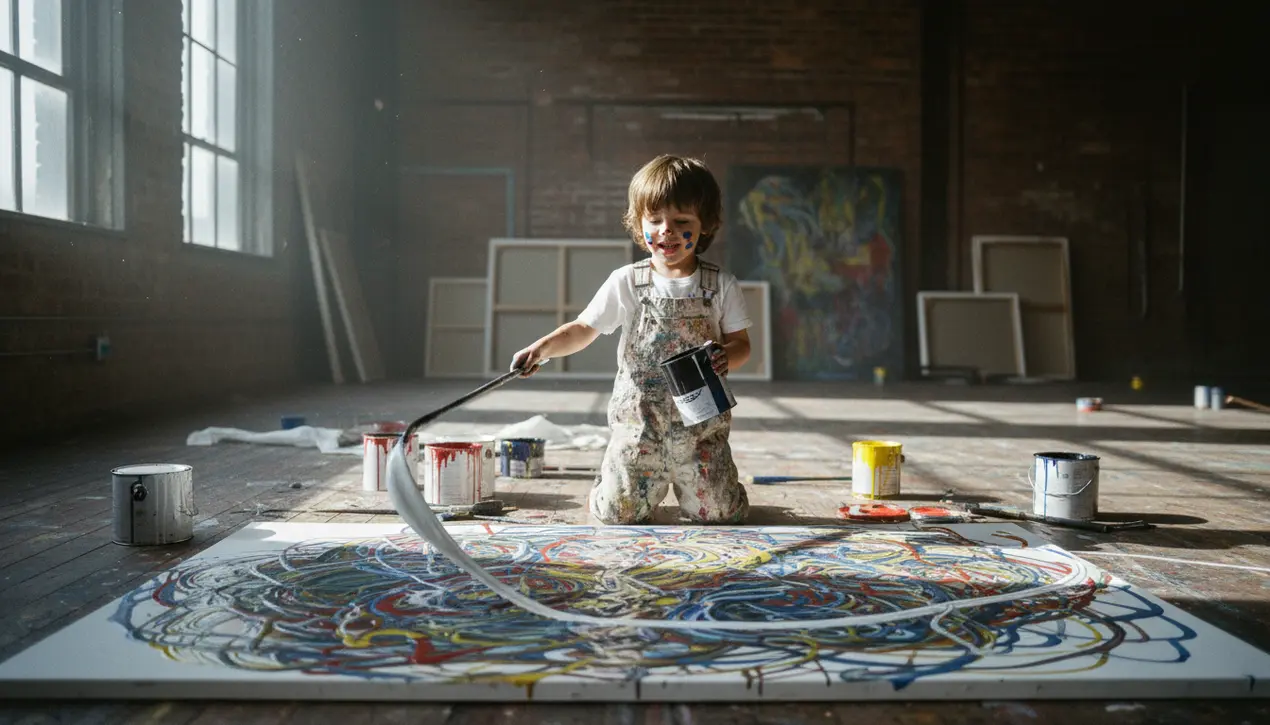
Scienceneuroscience
Study: Kids’ Drip Paintings More Like Pollock’s Than Adults’
SO
Sophia King
2 hours ago7 min read2 comments
In a revelation that feels like a perfectly rendered digital brushstroke, a new study suggests the chaotic, beautiful drips of a child’s painting share a profound, almost algorithmic, kinship with the masterworks of Jackson Pollock. This isn't about artistic intent, but the raw, uncalculated motion of creation—a finding that resonates deeply in an era where we're teaching AI the soul of human expression.The research, conducted by a team of cognitive scientists and art historians, meticulously analyzed the movement patterns of subjects across age groups as they engaged in drip painting. They discovered that adults, burdened by years of learned fine motor control and a conscious desire for composition, produced work that was often stiff and deliberate.Their gestures were calculated, their wrists tight, resulting in patterns that, while sometimes pleasing, lacked the dynamic, chaotic energy that defines Pollock's legacy. Children, however, operated on a different frequency entirely.Their movements were more holistic, a full-body engagement where paint flew from the brush not as a carefully placed mark, but as a natural extension of their exuberant, unrefined motion. They weren't painting; they were playing, and in that play, they inadvertently replicated the very kinematic signatures that art experts identify in Pollock’s ‘Number 1A, 1948’ or ‘Lavender Mist’.The splatter master, it turns out, was not a paragon of graceful, balletic control as often mythologized, but rather an artist who harnessed a kind of controlled clumsiness, a willingness to let gravity, viscosity, and physical momentum become co-authors of the work. This study effectively reframes his genius not as a product of supreme dexterity, but of his ability to suppress it, to access a more primal, less filtered state of mark-making—one that children inhabit naturally.For those of us immersed in the world of AI and creative tools, this is more than an art history footnote; it's a core design challenge. When we train generative models on Pollock’s work, are we capturing the aesthetic of the splatter or the physics of the body that made it? Tools like Midjourney and Stable Diffusion can mimic the visual texture of action painting with stunning accuracy, but they lack the kinematic soul, the ‘body memory’ that this study highlights.It suggests that the next frontier for creative AI may not be in higher-resolution outputs, but in integrating a simulated physicality—a digital proprioception that understands the weight of a virtual arm, the flick of a simulated wrist. Imagine a future Figma plugin or Procreate brush that doesn't just apply a Pollock-esque filter, but requires you to physically gesture with your iPad or stylus, with the tool’s algorithm responding to the velocity and clumsiness of your movement, rewarding energetic, whole-body engagement over precise, fingertip control.This research bridges the gap between the toddler’s joyful mess and the master’s curated chaos, reminding us that the most profound forms of human expression often bypass the conscious mind and flow directly from the body's innate, imperfect logic. In deconstructing Pollock, we haven't diminished his genius; we've simply discovered that its source code is written in a language we all spoke fluently before we learned to write our own names.
#featured
#art
#neuroscience
#children
#motor skills
#Jackson Pollock
#creativity
#cognitive development
Stay Informed. Act Smarter.
Get weekly highlights, major headlines, and expert insights — then put your knowledge to work in our live prediction markets.
Related News
Comments
Loading comments...
© 2025 Outpoll Service LTD. All rights reserved.